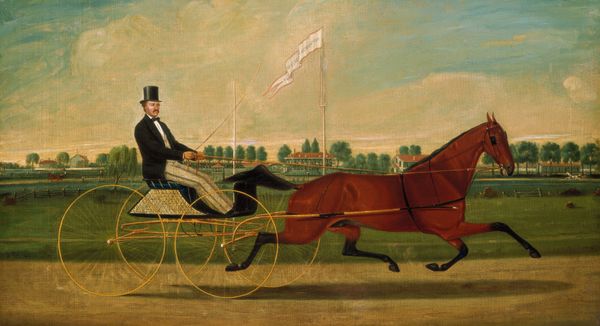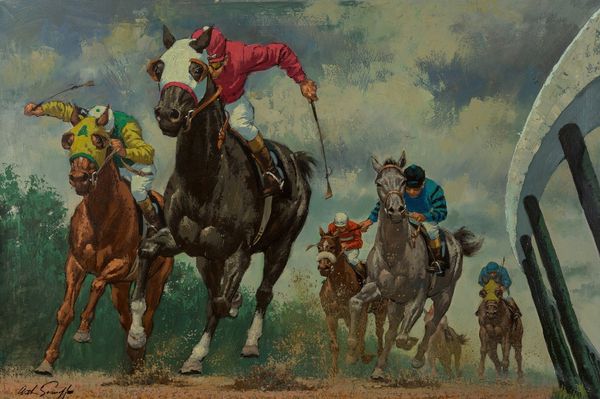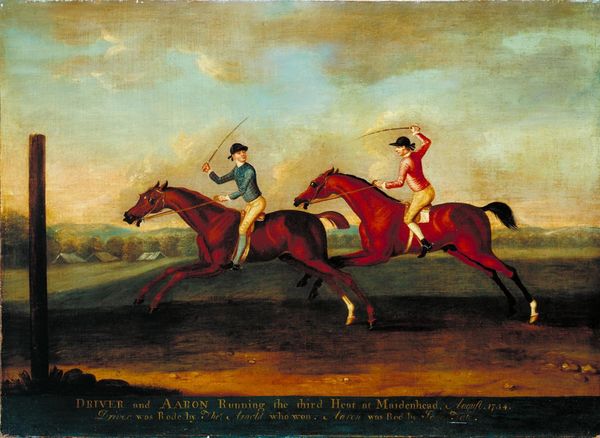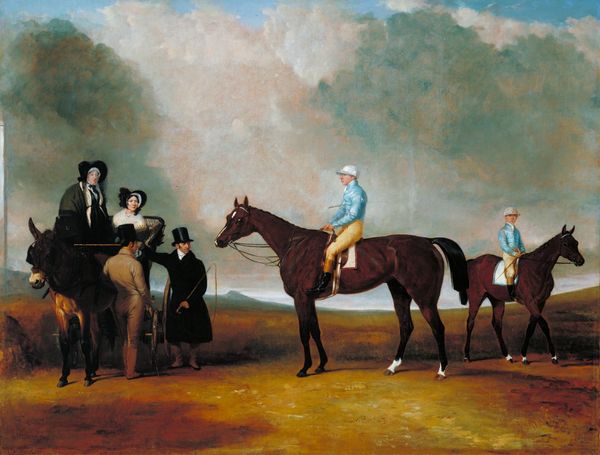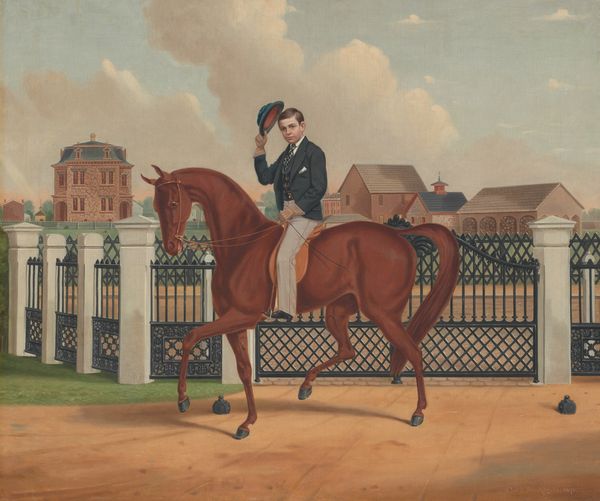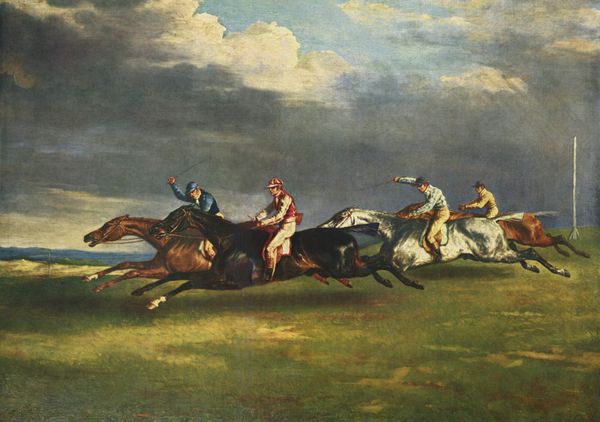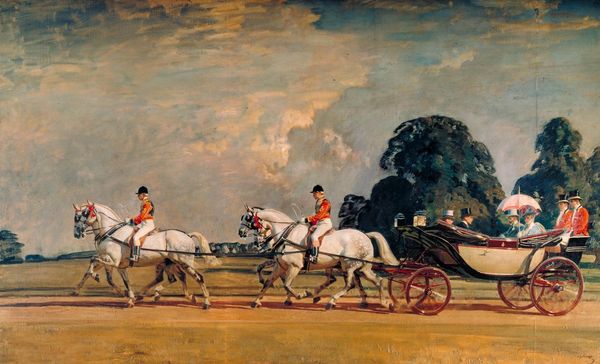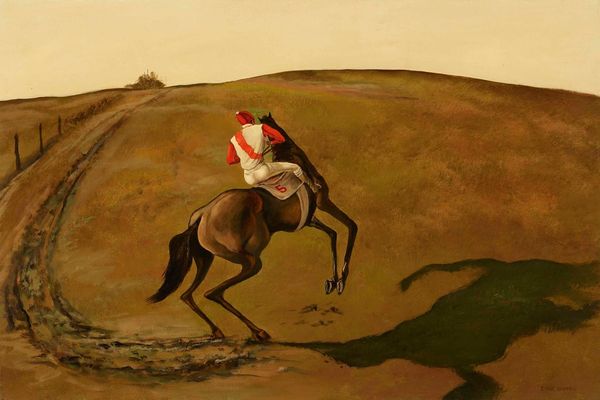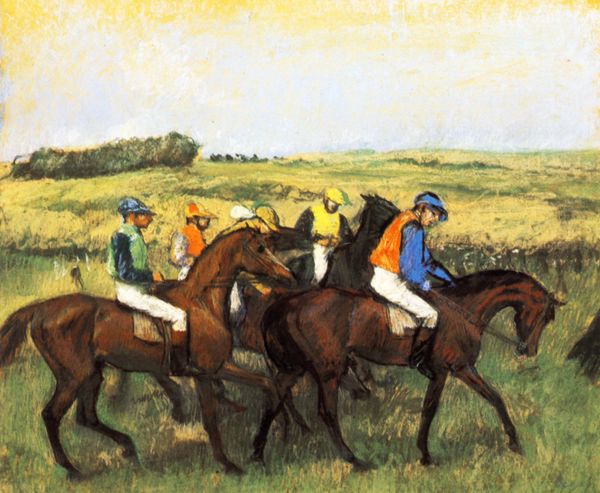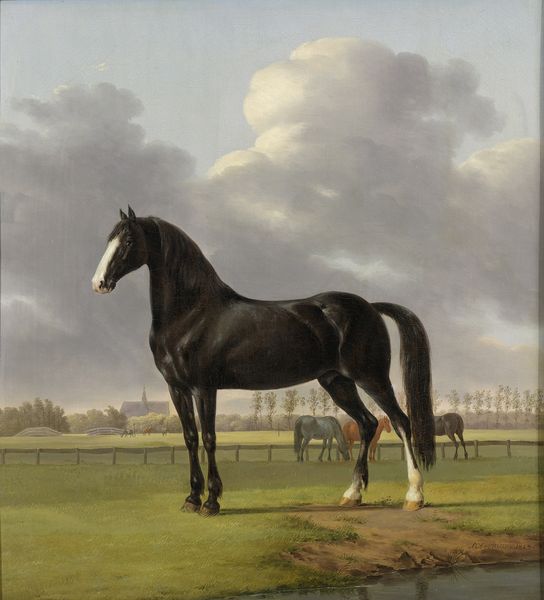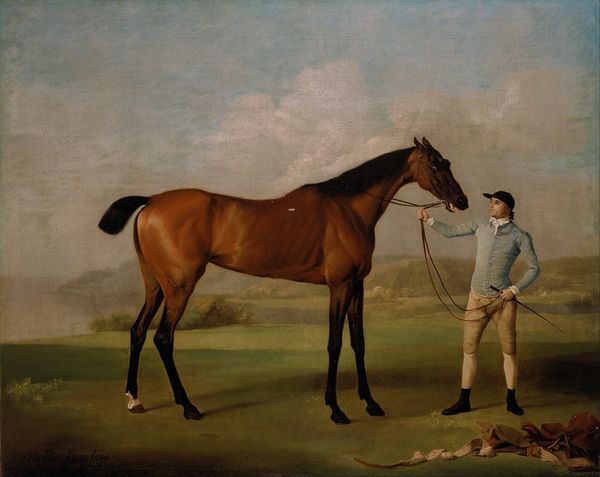
Budd Doble Driving Goldsmith Maid at Belmont Driving Park 1876
0:00
0:00
painting, oil-paint
#
portrait
#
painting
#
oil-paint
#
landscape
#
genre-painting
#
academic-art
#
realism
Dimensions: overall: 66 x 91.6 cm (26 x 36 1/16 in.) framed: 82.5 x 106 x 5 cm (32 1/2 x 41 3/4 x 1 15/16 in.)
Copyright: National Gallery of Art: CC0 1.0
Editor: Here we have Charles S. Humphreys' 1876 painting, "Budd Doble Driving Goldsmith Maid at Belmont Driving Park," rendered in oil. I’m immediately struck by the incredible dynamism he captures with the horse in full stride; its form almost blurs with movement. What's your take on this piece? Curator: The depiction of movement certainly is arresting, isn’t it? I find it intriguing to consider this image through a materialist lens. Note the labor embedded within. Not just Doble's, driving the horse, but also Goldsmith Maid's, physically performing. Beyond that, think of the unseen labor: the training, the farrier's work, the crafting of the sulky. Editor: That's a different angle! So, you're focusing on the effort and creation process, beyond just the final "artwork"? Curator: Precisely! Consider the paints themselves: where did the pigments come from? Who ground them? What was the social status of the labourers involved? Even the Belmont Driving Park speaks to a whole infrastructure built around leisure and consumption in that era. Editor: That makes me think about the societal context as a commodity, then…like Humphreys is presenting a specific vision of idealized competition as something to be consumed by viewers. Curator: Absolutely. We often see paintings of elites in this time period, but here the artist is presenting both elite leisure and, equally importantly, elite labor as components of an idealized performance of industry. How much was Humphreys himself involved in the culture he depicts? Were his materials sourced locally or internationally? These factors can help contextualize what we're viewing. Editor: I never considered thinking about where the materials originated, but it really helps contextualize what's in front of us! Curator: Looking at the art this way is fascinating. Next time, maybe we consider art making's impact on climate.
Comments
No comments
Be the first to comment and join the conversation on the ultimate creative platform.
